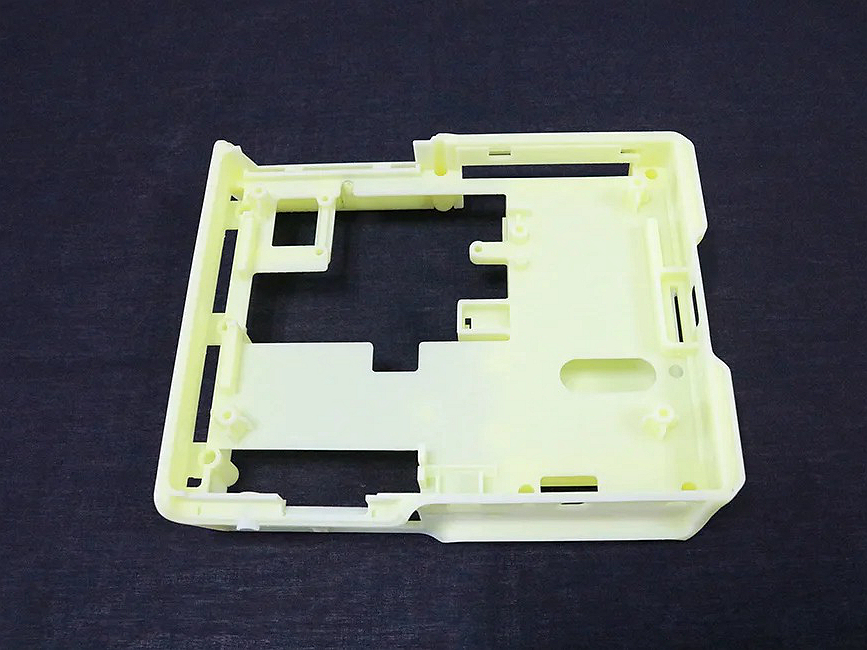Laminated Object Manufacturing (LOM): An 3D Printing Process Introduction
Laminated Object Manufacturing (LOM) is an additive manufacturing technology that uses the layer-by-layer bonding of material sheets with an adhesive to form solid parts. Unlike fused deposition modeling (FDM), which extrudes thermoplastic filaments, LOM employs a more versatile approach that uses a range of materials like paper, plastics, and composites. This method is particularly valued for its speed, cost-effectiveness, and ability to produce large-scale prototypes and tooling with relatively low material costs.
In this blog, we’ll examine how LOM works, its advantages, the materials used, and the industries where LOM has become a crucial tool for rapid prototyping, tooling, and even low-volume production, with applications in aerospace, automotive, and engineering.
How Laminated Object Manufacturing (LOM) Works
Laminated Object Manufacturing (LOM) operates by sequentially laminating thin layers of material (such as paper, plastic, or metal) and bonding them with an adhesive. A high-precision laser cutter is used to cut the material to the exact shape of each layer based on the 3D CAD model. This process allows for high-precision prototypes and functional models to be built layer by layer, with minimal material waste.
1. Material Selection
LOM is a versatile technology that can work with a range of materials. Paper-based LOM is frequently used for rapid prototyping due to its cost-effectiveness and ease of handling. Paper sheets are typically between 0.1 mm and 0.2 mm thick, making them suitable for creating large-scale, low-cost models. Plastic sheets are used for applications requiring more durable prototypes, and metal sheets such as stainless steel or aluminum are used for functional tooling and end-use parts in high-strength applications.
2. Layer-by-Layer Construction
The LOM process begins by placing the first material layer on the build platform, which is typically made from a flat surface capable of holding the material securely. A specialized adhesive is applied to the material, and a laser cutter or knife then cuts the desired shape from the sheet. After cutting, the platform lowers slightly, and a new material layer is placed on top, bonded, and cut to shape. This process is repeated layer by layer until the part is fully formed.
3. Cutting and Finishing
Excess material is removed once the part is built using a cutting tool or manual processes. This removal leaves behind the part, which can then undergo post-processing. Standard post-processing techniques include sanding to smooth rough edges or adding coatings to improve the material properties and surface finish.
Advantages of Laminated Object Manufacturing (LOM)
Cost-Effective: LOM offers one of the most cost-efficient methods for producing large prototypes and models. Paper, one of the most common materials used in LOM, is inexpensive and easily accessible. At the same time, plastic and metal sheets are still more affordable than many other materials used in 3D printing.
High-Speed Production: LOM is faster than other additive manufacturing techniques like Selective Laser Sintering (SLS), thanks to its laser cutting and adhesive bonding. The high-speed layering and cutting process allows for rapid prototyping and model creation.
Material Flexibility: LOM supports a wide variety of materials, including paper, plastics, and composites, which allows it to be used across industries for a broad range of applications. The materials can vary in strength, weight, and flexibility, depending on the project's needs.
Large-Scale Parts: LOM can easily handle large-scale prints, ideal for industries requiring bigger models, such as aerospace and automotive. The process allows for producing parts that are typically too large to be created with other 3D printing technologies.
Materials Used in LOM 3D Printing
LOM supports a variety of materials, each offering specific properties suited for different applications. The table below outlines some of the most commonly used materials in LOM printing:
Material | Properties | Applications |
|---|---|---|
Low-cost, lightweight, ideal for large models | Prototypes, architectural models, design verification | |
Plastic Sheets | Durable, versatile, available in various thicknesses | Automotive prototypes, engineering models, tool inserts |
High strength, heat-resistant, suitable for tooling | Aerospace tooling, industrial parts, high-performance prototypes | |
Combination of strength, lightweight, and flexibility | Automotive applications, manufacturing tooling |
Common Applications of Laminated Object Manufacturing (LOM) 3D Printing
LOM is particularly useful in applications where cost-effectiveness and fast production times are essential. Some common uses of LOM include:
Prototyping: LOM is widely used in the early stages of product development for prototyping, where speed and cost-efficiency are critical. Designers can create large-scale models to test and evaluate product concepts quickly.
Automotive: LOM is used in the automotive industry to create functional prototypes of car parts, such as dashboards, bumpers, and interior panels. The ability to produce prototypes quickly and cheaply is vital in the automotive industry, which often requires many iterations during the design process.
Aerospace: Aerospace engineers use LOM to produce large parts for testing, such as wing components, fuselage sections, and turbine housings. The technology allows for rapid iteration and reduces material waste compared to traditional methods.
Tooling: LOM is ideal for creating tooling such as molds, dies, and jigs. Its ability to produce large parts quickly and with excellent accuracy makes it an attractive option for companies needing tooling for high-volume manufacturing.
Why Choose Laminated Object Manufacturing (LOM)?
Laminated Object Manufacturing (LOM) provides a highly cost-effective, versatile, and fast solution for industries requiring low-cost prototypes and large-scale production models. Whether in aerospace, automotive, or engineering, LOM can rapidly create durable, functional parts with various materials. Its speed and cost-efficiency make it ideal for prototyping, tooling, and even low-volume production.
To learn more about LOM 3D printing and other 3D printing technologies, visit our website.
FAQs:
How does Laminated Object Manufacturing (LOM) compare to other 3D printing technologies like SLS and FDM?
What types of materials can be used in LOM printing?
How accurate are LOM prints compared to other methods?
Can LOM be used for both prototypes and end-use parts?
What industries benefit most from LOM 3D printing?

